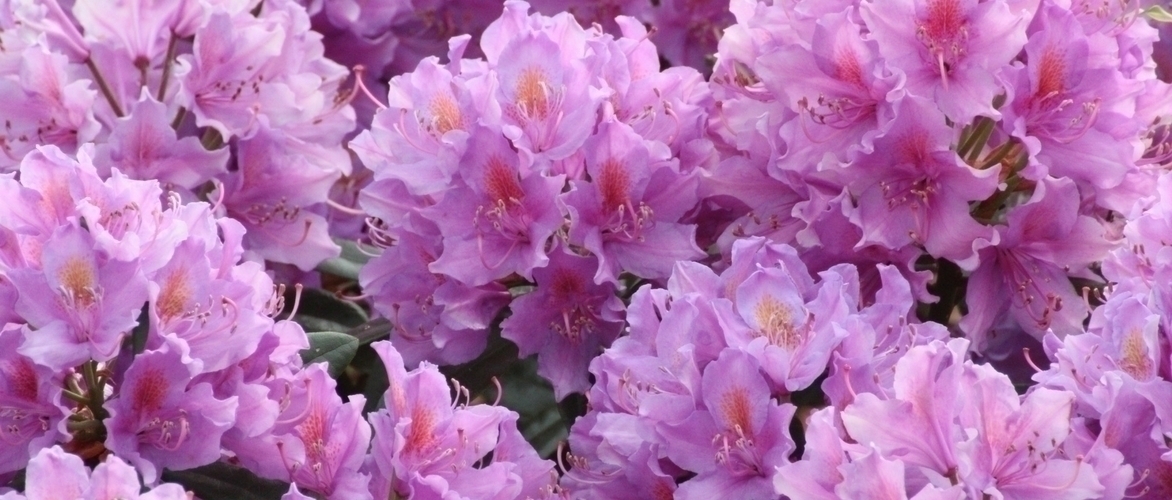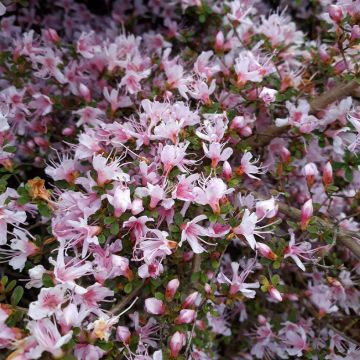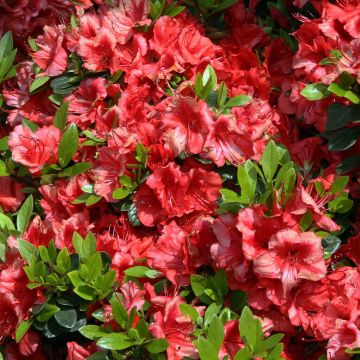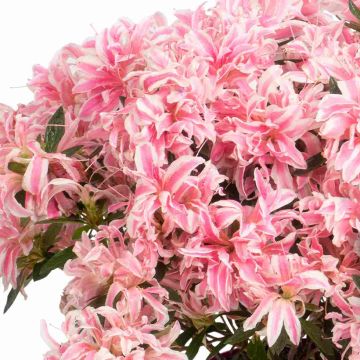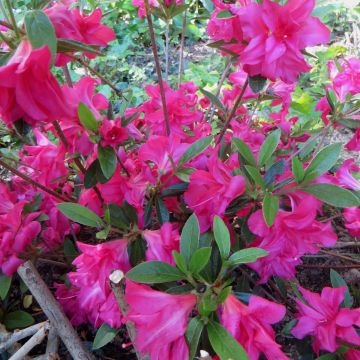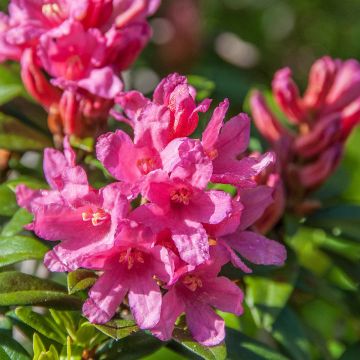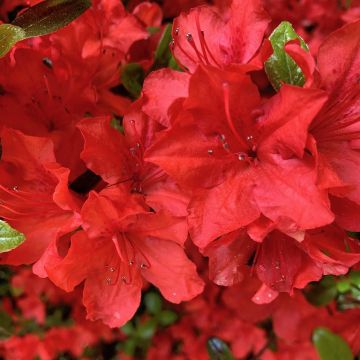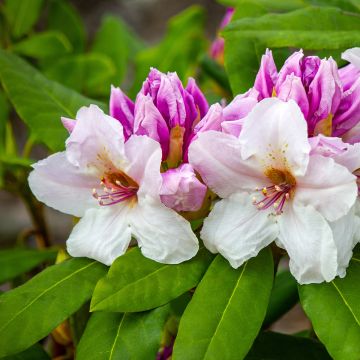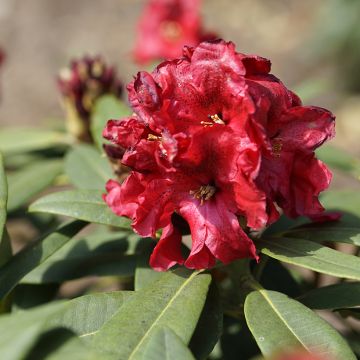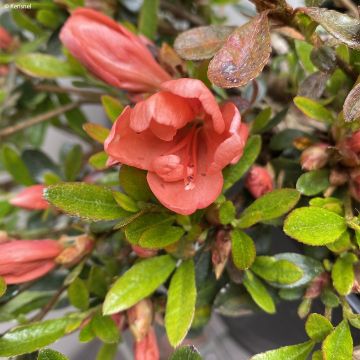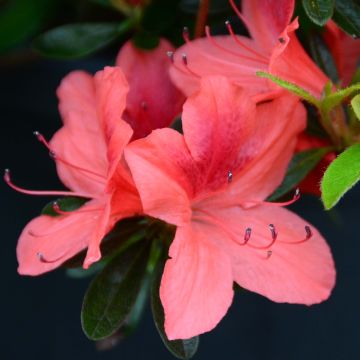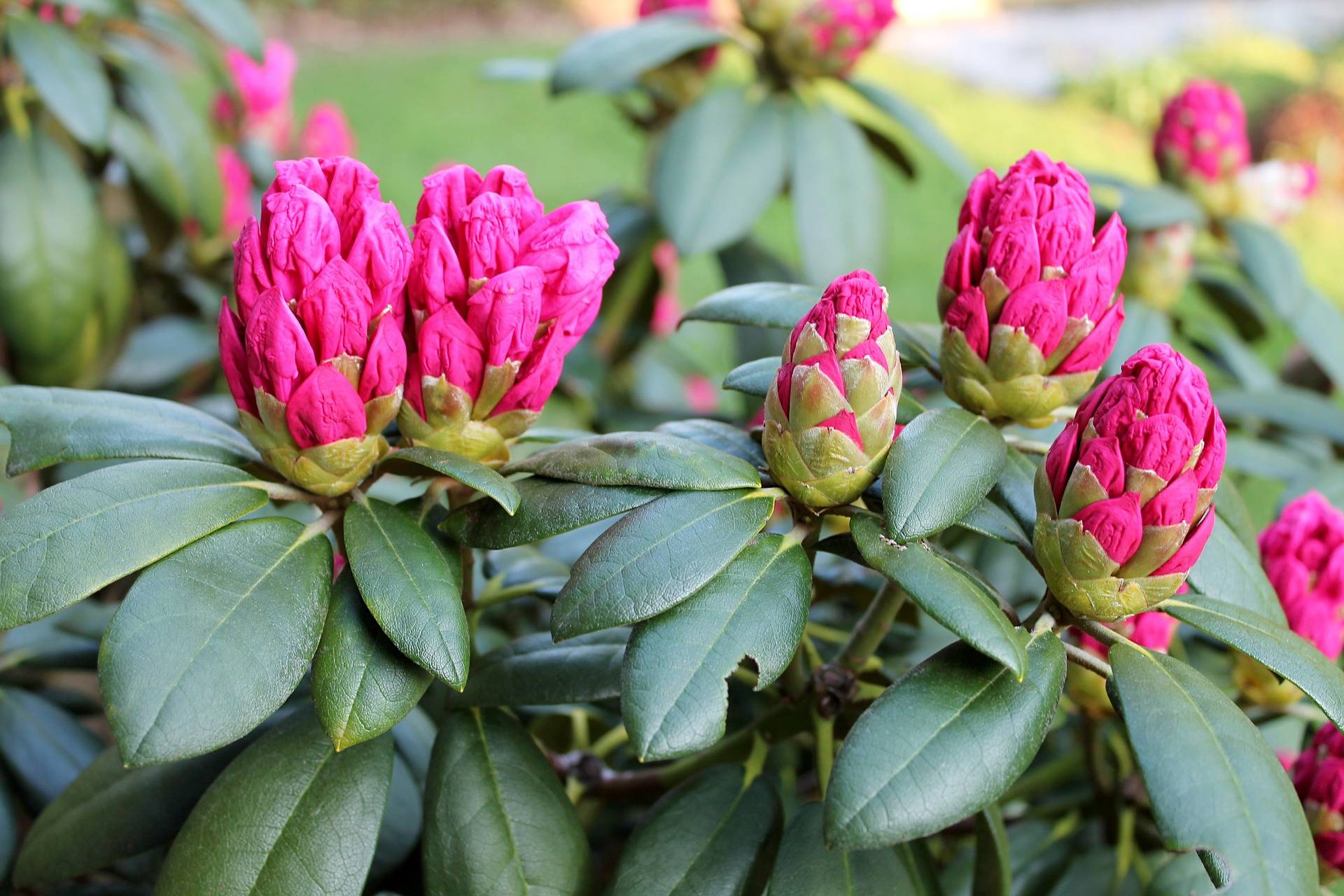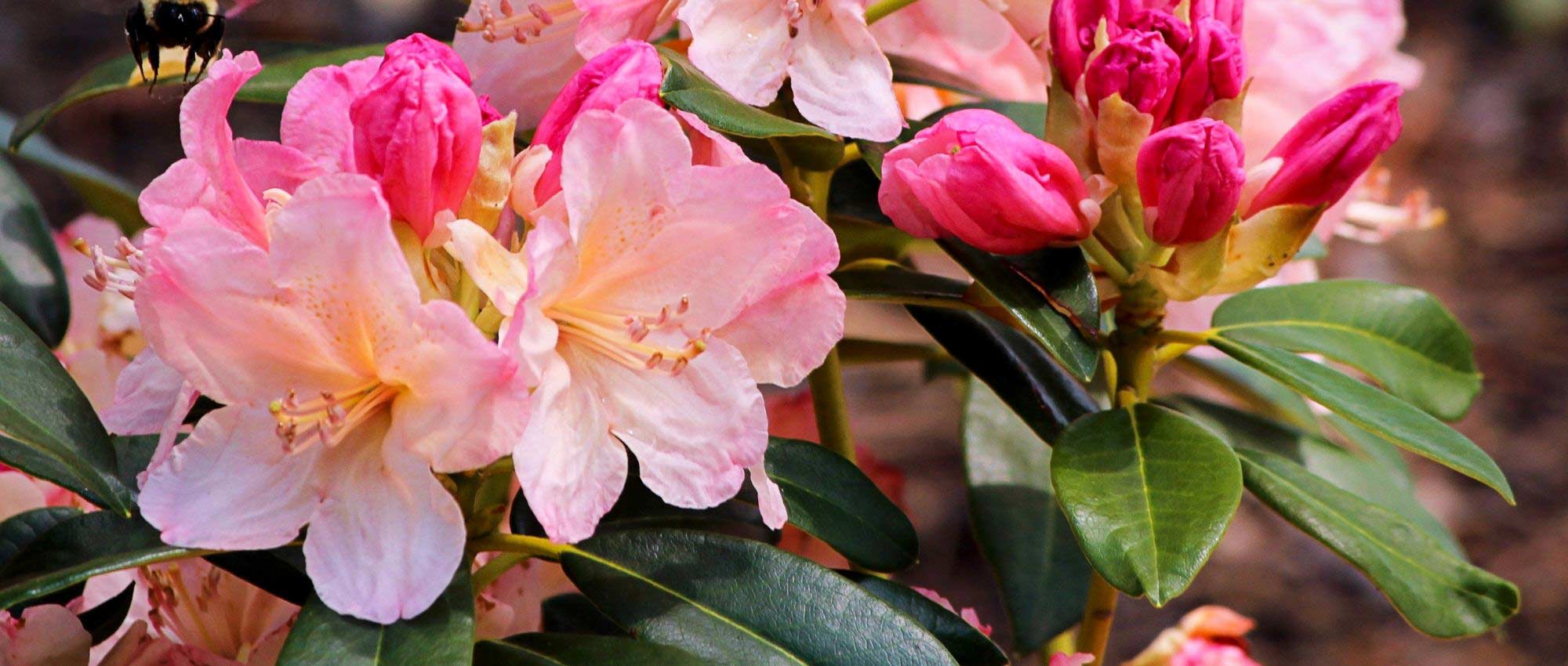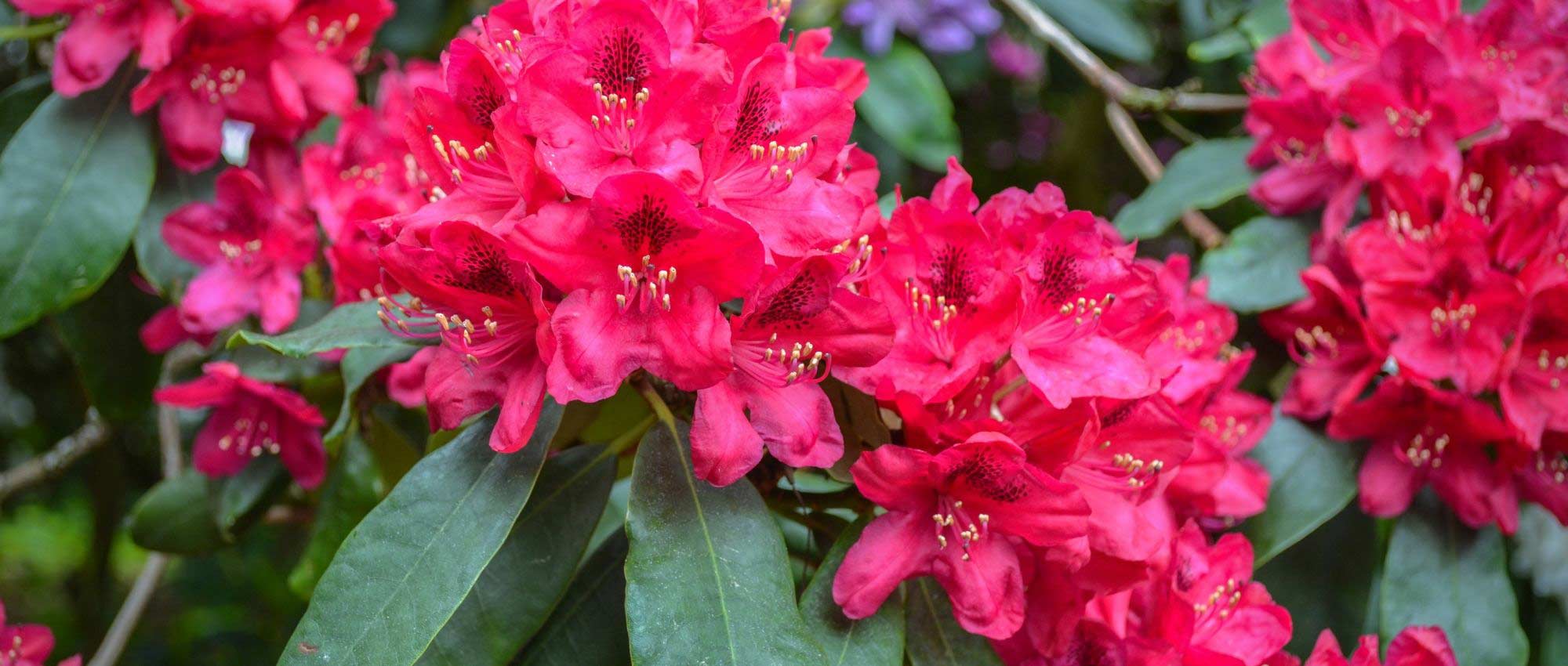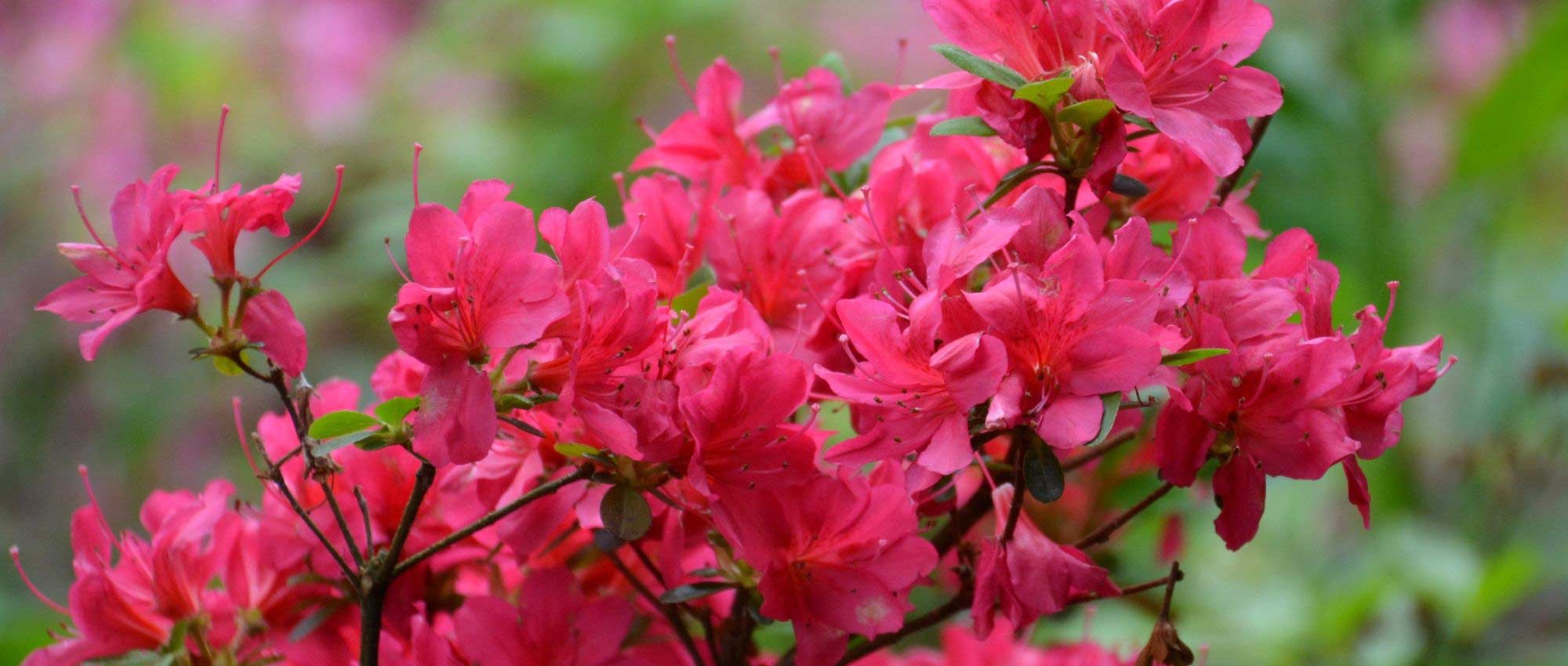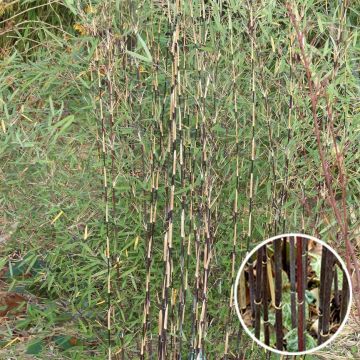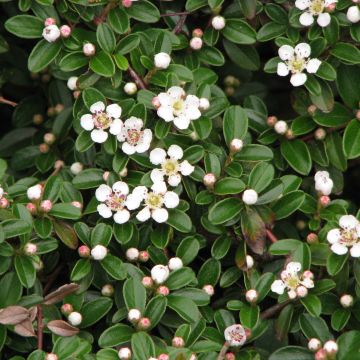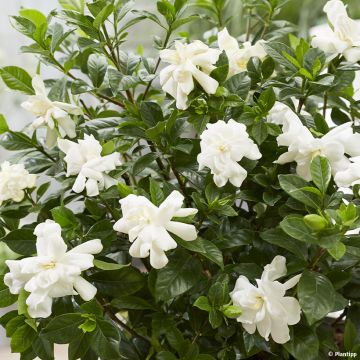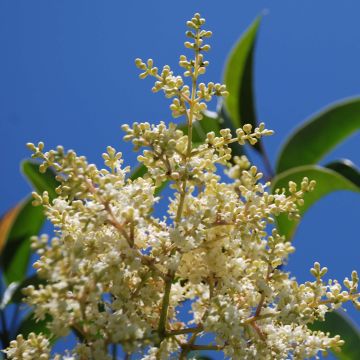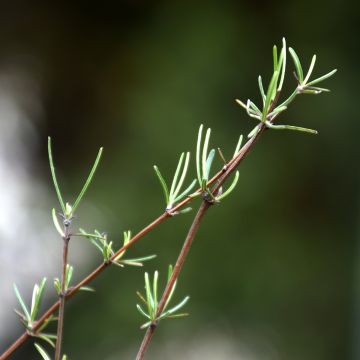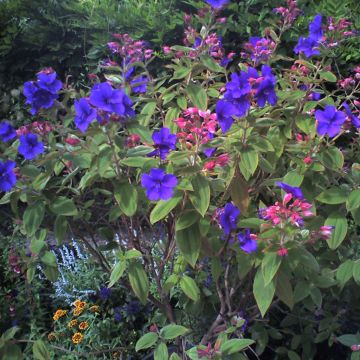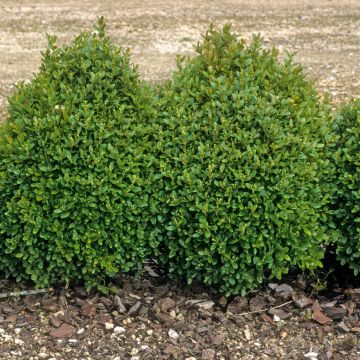

Rhododendron (x) impeditum Ramapo
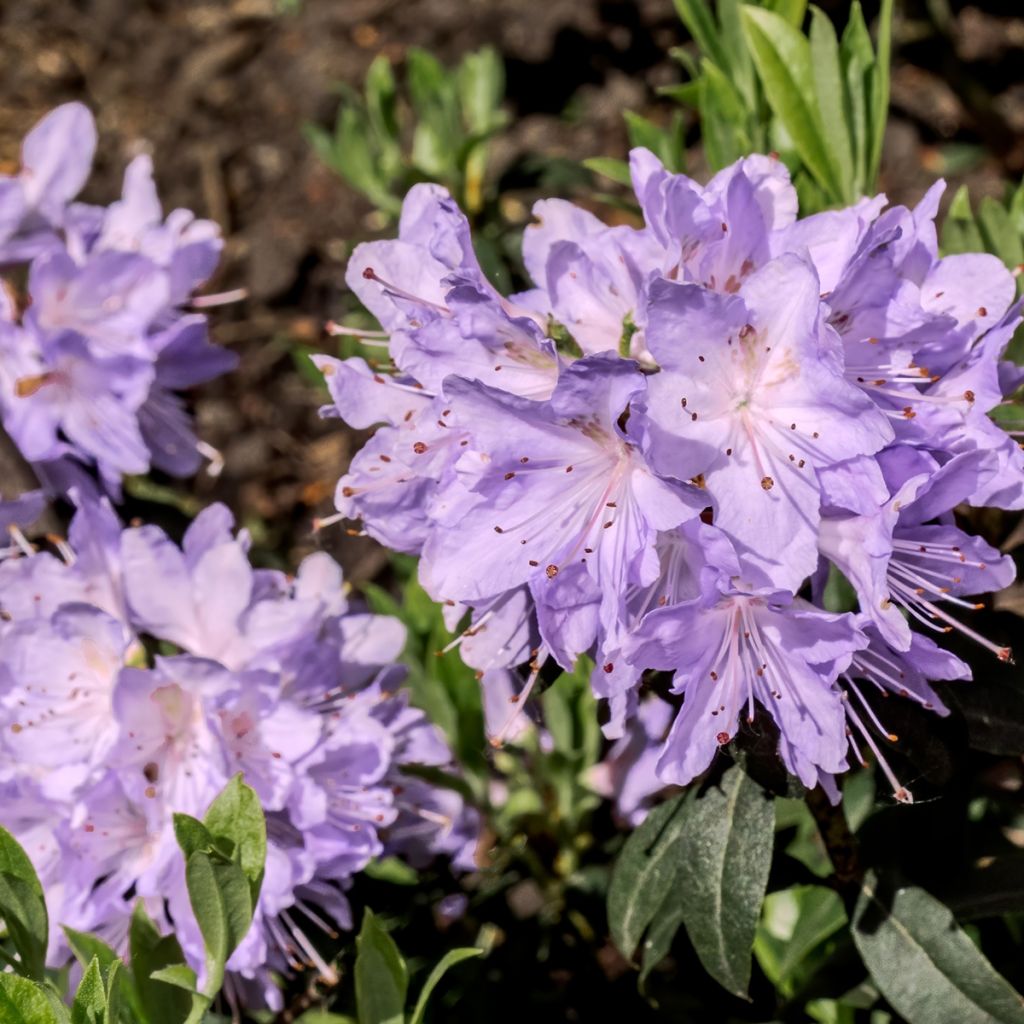

Rhododendron (x) impeditum Ramapo
Rhododendron (x) impeditum Ramapo
Rhododendron x impeditum Ramapo
Impeditum Rhododendron, Dwarf Purple Rhododendron
Special offer!
Receive a €20 voucher for any order over €90 (excluding delivery costs, credit notes, and plastic-free options)!
1- Add your favorite plants to your cart.
2- Once you have reached €90, confirm your order (you can even choose the delivery date!).
3- As soon as your order is shipped, you will receive an email containing your voucher code, valid for 3 months (90 days).
Your voucher is unique and can only be used once, for any order with a minimum value of €20, excluding delivery costs.
Can be combined with other current offers, non-divisible and non-refundable.
Home or relay delivery (depending on size and destination)
Schedule delivery date,
and select date in basket
This plant carries a 24 months recovery warranty
More information
We guarantee the quality of our plants for a full growing cycle, and will replace at our expense any plant that fails to recover under normal climatic and planting conditions.
Would this plant suit my garden?
Set up your Plantfit profile →
Description
Rhododendron impeditum 'Ramapo' is a compact bush adorned with evergreen leaves, shiny and grey-green with a bluish hue. This spring variety will surprise you with its superb flowering in shades of mauve to lavender. It thrives in the sun in cooler regions, or in partial shade. An acidic and moist soil is essential for successful cultivation. Forming a low and spreading bush, this graceful little rhododendron is perfect for small gardens. Very hardy, it can also be grown in a container to decorate a terrace.
Rhododendrons are plants from the Ericaceae family, which includes a hundred genera, many of which are widespread in our gardens. Heathers, Kalmia, Andromeda, Leucothoe, Oxydendrum or Gaultheria are precious in ornamental beds, while Arbutus and especially Blueberries delight us with their fruits. In the vast majority, these are plants that prefer soils devoid of limestone, with an acidic tendency and humid climates.
Resembling an Azalea in its foliage and flowering, Rhododendron impeditum 'Ramapo' forms a dense and spreading bush, 60cm (24in) high and 1m (3ft) wide at maturity. Its small evergreen leaves have a beautiful glossy appearance and range in colour from green to blue and grey. Elliptical in shape, they are slender and leathery, with a fairly prominent central vein.
During the months of April and May, this bush flowers in clusters of 3 to 6 flowers, sometimes more, in shades of lavender to pink-mauve. This magnificent display lasts for about 3 weeks. Very hardy down to around -24°C, this Rhododendron impeditum 'Ramapo' shows slow growth.
The 'Ramapo' Rhododendron will be ideal in a border, in a pot, or even as a standalone plant in a small garden. For planting in a container, choose a pot made of terracotta or "double skin" if it is a plastic model. This insulating layer of air will prevent the substrate from overheating in summer, which can be detrimental to the roots. Also, remember to water very regularly in this case, as container cultivation is more stressful than in open ground.
In beds, this miniature Rhododendron will occupy the foreground, in front of taller plants of the heath family, such as the beautiful Kalmias, or Mountain Laurels, with their beautiful dark green foliage and lovely small flowers in May-June. It will also thrive in the light shade of an Oxydendrum arboreum, whose summer flowering in long clusters of white bells and dazzling autumn foliage will provide a spectacle for much of the year. And to ensure flowers all year round, complete this picture with an Autumn Camellia like the magnificent Camellia sasanqua Yuletide, whose bright red flowers with yellow stamens will enchant you from November to January...
Rhododendron (x) impeditum Ramapo in pictures
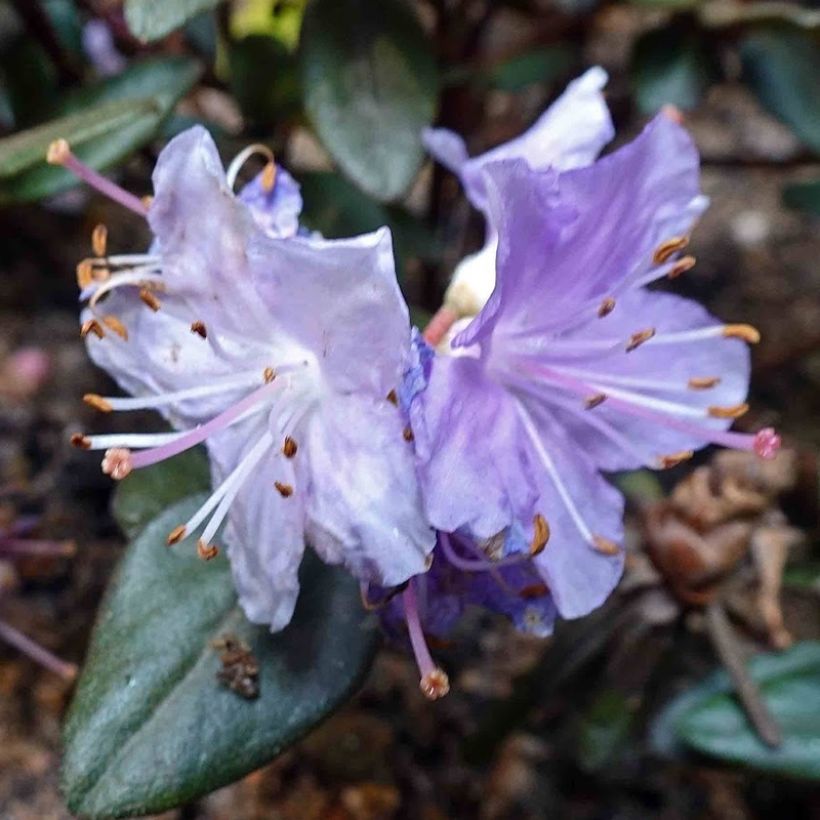

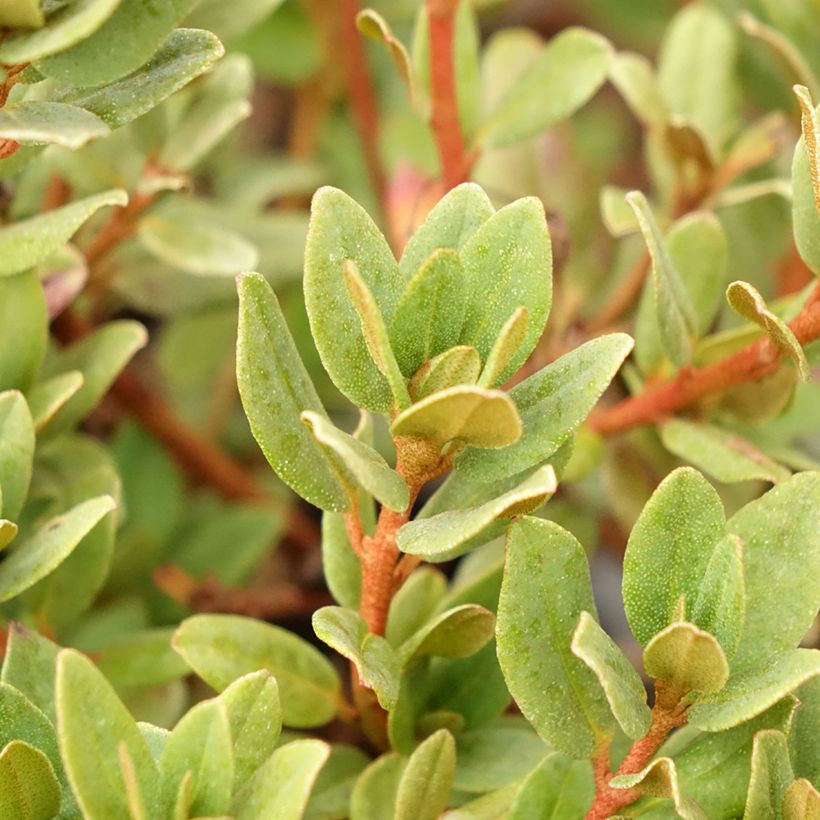

Plant habit
Flowering
Foliage
Botanical data
Rhododendron
x impeditum
Ramapo
Ericaceae
Impeditum Rhododendron, Dwarf Purple Rhododendron
Cultivar or hybrid
Other Small Rhododendron
View all →Planting and care
Plant the 'Ramapo' Rhododendron impeditum in a sunny (in cooler areas) to partially shaded (in hotter areas) location, protected from cold and drying winds, in a moist, humus-rich and light soil with an acidic tendency (pH between 4.5 and 6). Like all plants of the heath family, it does not tolerate chalky soils or heavy soils saturated with water in winter. And like the majority of rhododendrons, it does not tolerate drought or heatwaves. If the soil remains moist in summer, this rhododendron can also tolerate exposure to non-burning sunlight.
Dig a hole three times larger than the pot. Soak the root ball in non-chalky water for fifteen minutes and plant the bush at the collar level, in a mixture consisting of leaf compost, gravel or volcanic rock, and loam. Water generously and keep the soil moist in summer. Rhododendrons have a shallow root system, therefore, they are sensitive to long periods of drought. That's why it is recommended to have a humus-rich soil and abundant watering during dry periods. Moreover, this root system is not very strong, which is why it is essential to lighten heavy soils with draining materials (gravel, volcanic rock, clay pellets) at planting. Apply a mulch of shredded pine bark around the base of the bush every spring to retain soil moisture and maintain an acidic pH.
Maintenance consists of removing faded flowers in summer and cutting out dead branches. Azaleas and Rhododendrons can sometimes be attacked by weevils that eat the edges of the leaves and rootlets, as well as the infamous "rhododendron beetle" which rarely causes significant damage. Effective biological solutions are available today against weevils. Yellowing of the leaves (chlorosis) in Rhododendron indicates poor iron assimilation from the soil and can lead to premature death of the plant. While limestone (from the soil or irrigation water) is often the cause, poorly drained soil or deeply planted root balls can also explain the phenomenon.
Planting period
Intended location
Care
Planting & care advice
This item has not been reviewed yet - be the first to leave a review about it.
Similar products
Haven't found what you were looking for?
Hardiness is the lowest winter temperature a plant can endure without suffering serious damage or even dying. However, hardiness is affected by location (a sheltered area, such as a patio), protection (winter cover) and soil type (hardiness is improved by well-drained soil).

Photo Sharing Terms & Conditions
In order to encourage gardeners to interact and share their experiences, Promesse de fleurs offers various media enabling content to be uploaded onto its Site - in particular via the ‘Photo sharing’ module.
The User agrees to refrain from:
- Posting any content that is illegal, prejudicial, insulting, racist, inciteful to hatred, revisionist, contrary to public decency, that infringes on privacy or on the privacy rights of third parties, in particular the publicity rights of persons and goods, intellectual property rights, or the right to privacy.
- Submitting content on behalf of a third party;
- Impersonate the identity of a third party and/or publish any personal information about a third party;
In general, the User undertakes to refrain from any unethical behaviour.
All Content (in particular text, comments, files, images, photos, videos, creative works, etc.), which may be subject to property or intellectual property rights, image or other private rights, shall remain the property of the User, subject to the limited rights granted by the terms of the licence granted by Promesse de fleurs as stated below. Users are at liberty to publish or not to publish such Content on the Site, notably via the ‘Photo Sharing’ facility, and accept that this Content shall be made public and freely accessible, notably on the Internet.
Users further acknowledge, undertake to have ,and guarantee that they hold all necessary rights and permissions to publish such material on the Site, in particular with regard to the legislation in force pertaining to any privacy, property, intellectual property, image, or contractual rights, or rights of any other nature. By publishing such Content on the Site, Users acknowledge accepting full liability as publishers of the Content within the meaning of the law, and grant Promesse de fleurs, free of charge, an inclusive, worldwide licence for the said Content for the entire duration of its publication, including all reproduction, representation, up/downloading, displaying, performing, transmission, and storage rights.
Users also grant permission for their name to be linked to the Content and accept that this link may not always be made available.
By engaging in posting material, Users consent to their Content becoming automatically accessible on the Internet, in particular on other sites and/or blogs and/or web pages of the Promesse de fleurs site, including in particular social pages and the Promesse de fleurs catalogue.
Users may secure the removal of entrusted content free of charge by issuing a simple request via our contact form.
The flowering period indicated on our website applies to countries and regions located in USDA zone 8 (France, the United Kingdom, Ireland, the Netherlands, etc.)
It will vary according to where you live:
- In zones 9 to 10 (Italy, Spain, Greece, etc.), flowering will occur about 2 to 4 weeks earlier.
- In zones 6 to 7 (Germany, Poland, Slovenia, and lower mountainous regions), flowering will be delayed by 2 to 3 weeks.
- In zone 5 (Central Europe, Scandinavia), blooming will be delayed by 3 to 5 weeks.
In temperate climates, pruning of spring-flowering shrubs (forsythia, spireas, etc.) should be done just after flowering.
Pruning of summer-flowering shrubs (Indian Lilac, Perovskia, etc.) can be done in winter or spring.
In cold regions as well as with frost-sensitive plants, avoid pruning too early when severe frosts may still occur.
The planting period indicated on our website applies to countries and regions located in USDA zone 8 (France, United Kingdom, Ireland, Netherlands).
It will vary according to where you live:
- In Mediterranean zones (Marseille, Madrid, Milan, etc.), autumn and winter are the best planting periods.
- In continental zones (Strasbourg, Munich, Vienna, etc.), delay planting by 2 to 3 weeks in spring and bring it forward by 2 to 4 weeks in autumn.
- In mountainous regions (the Alps, Pyrenees, Carpathians, etc.), it is best to plant in late spring (May-June) or late summer (August-September).
The harvesting period indicated on our website applies to countries and regions in USDA zone 8 (France, England, Ireland, the Netherlands).
In colder areas (Scandinavia, Poland, Austria...) fruit and vegetable harvests are likely to be delayed by 3-4 weeks.
In warmer areas (Italy, Spain, Greece, etc.), harvesting will probably take place earlier, depending on weather conditions.
The sowing periods indicated on our website apply to countries and regions within USDA Zone 8 (France, UK, Ireland, Netherlands).
In colder areas (Scandinavia, Poland, Austria...), delay any outdoor sowing by 3-4 weeks, or sow under glass.
In warmer climes (Italy, Spain, Greece, etc.), bring outdoor sowing forward by a few weeks.






























